Exploring the Restorative Effects of Natural Environments in Virtual Reality
Abstract
1. Introduction
1.1. Benefits of Virtual Natural Environments
1.2. Research Objectives
- The validation of three natural VR scenarios, assessing their effects on elicited emotional states in terms of arousal and valence;
- The assessment of the effectiveness of using natural VR scenarios in restoring an emotional baseline after exposure to arousing scenarios.
1.3. Research Hypotheses
2. Materials and Method
2.1. Research Design
2.2. Sample Description
2.3. Procedure
2.4. Virtual Scenarios
2.5. Measures
2.6. Analytic Strategies
3. Results
3.1. Baseline Phase: Participants’ HR and RMSSD (HRV) Equivalence Baselines
3.2. Baseline Phase: Preliminary Analysis of Natural Scenarios on SAM Components
3.3. Baseline Phase: Preliminary Analysis of Natural Scenarios on HR and RMSSD (HRV)
3.4. Reaction Phase: Analysis of the Differences Between the Natural and Neutral Groups (H1–H2)
3.4.1. Reaction Phase: Analysis of Valence of Perceived Emotions (SAM) as a Function of Groups and Post-War Recovery Scenarios (H1a–H2a)
3.4.2. Reaction Phase: Analysis of Arousal of Perceived Emotion (SAM) as a Function of Groups and Post-War Recovery Scenarios (H1b–H2b)
3.4.3. Reaction Phase: Physiological Reactions as a Function of Groups and Post-War Recovery Scenarios (H1c–H2c)
Mean HR
RMSSD (HRV)
3.5. Analysis of the Effectiveness of Natural Scenarios in Restoring the Baseline Values (H3)
3.5.1. Comparison Between Average Valence of Baseline Phase and the Average Valence of Reaction Phase Across the Group Factors (H3a)
3.5.2. Comparison of the Baseline Phase and Reaction Phase Levels of Arousal Across Groups (H3b)
3.5.3. Comparison of T1 (Baseline Phase) and T2 (Reaction Phase) Across Groups in Terms of Physiological Arousal (H3c)
Mean HR
RMSSD (HRV)
4. Discussion
5. Conclusions
Limitations and Future Directions
Supplementary Materials
Author Contributions
Funding
Institutional Review Board Statement
Informed Consent Statement
Data Availability Statement
Acknowledgments
Conflicts of Interest
References
- Proshansky, H.M. Environmental psychology and the real world. Am. Psychol. 1976, 31, 303–310. [Google Scholar] [CrossRef]
- Hartig, T.; Mitchell, R.; de Vries, S.; Frumkin, H. Nature and Health. Annu. Rev. Public Health 2014, 35, 207–228. [Google Scholar] [CrossRef] [PubMed]
- Ulrich, R.S. Aesthetic and Affective Response to Natural Environment. In Behavior and the Natural Environment; Altman, I., Wohlwill, J.F., Eds.; Springer: New York, NY, USA, 1983; pp. 85–125. [Google Scholar] [CrossRef]
- Bratman, G.N.; Daily, G.C.; Levy, B.J.; Gross, J.J. The benefits of nature experience: Improved affect and cognition. Landsc. Urban Plan. 2015, 138, 41–50. [Google Scholar] [CrossRef]
- Ohly, H.; White, M.P.; Wheeler, B.W.; Bethel, A.; Ukoumunne, O.C.; Nikolaou, V.; Garside, R. Attention Restoration Theory: A systematic review of the attention restoration potential of exposure to natural environments. J. Toxicol. Environ. Health Part B Crit. Rev. 2016, 19, 305–343. [Google Scholar] [CrossRef]
- McMahan, E.A.; Estes, D. The effect of contact with natural environments on positive and negative affect: A meta-analysis. J. Posit. Psychol. 2015, 10, 507–519. [Google Scholar]
- Roberts, A.; Hinds, J.; Camic, P.M. Nature activities and wellbeing in children and young people: A systematic literature review. J. Adventure Educ. Outdoor Learn. 2020, 20, 298–318. [Google Scholar] [CrossRef]
- Li, D.; Menotti, T.; Ding, Y.; Wells, N.M. Life Course Nature Exposure and Mental Health Outcomes: A Systematic Review and Future Directions. Int. J. Environ. Res. Public Health 2021, 18, 5146. [Google Scholar] [CrossRef]
- Vitale, V.; Martin, L.; White, M.P.; Elliott, L.R.; Wyles, K.J.; Browning, M.H.; Pahl, S.; Stehl, P.; Bell, S.; Bratman, G.N.; et al. Mechanisms underlying childhood exposure to blue spaces and adult subjective well-being: An 18-country analysis. J. Environ. Psychol. 2022, 84, 101876. [Google Scholar] [CrossRef]
- Berman, M.G.; Jonides, J.; Kaplan, S. The cognitive benefits of interacting with nature. Psychol. Sci. 2008, 19, 1207–1212. [Google Scholar] [CrossRef]
- Hartig, T.; Evans, G.W.; Jamner, L.D.; Davis, D.S.; Gärling, T. Tracking restoration in natural and urban field settings. J. Environ. Psychol. 2003, 23, 109–123. [Google Scholar] [CrossRef]
- Hartig, T.; Berg AE, V.D.; Hagerhall, C.M.; Tomalak, M.; Bauer, N.; Hansmann, R.; Ojala, A.; Syngollitou, E.; Carrus, G.; Herzele, A.V.; et al. Health benefits of nature experience: Psychological, social and cultural processes. In Forests, Trees and Human Health; Springer: Berlin/Heidelberg, Germany, 2011; pp. 127–168. [Google Scholar] [CrossRef]
- van den Berg, A.E.; Koole, S.L.; van der Wulp, N.Y. Environmental preference and restoration: (How) are they related? J. Environ. Psychol. 2003, 23, 135–146. [Google Scholar] [CrossRef]
- Kaplan, S.; Berman, M.G. Directed Attention as a Common Resource for Executive Functioning and Self-Regulation. Perspect. Psychol. Sci. A J. Assoc. Psychol. Sci. 2010, 5, 43–57. [Google Scholar] [CrossRef] [PubMed]
- Berto, R. Exposure to restorative environments helps restore attentional capacity. J. Environ. Psychol. 2005, 25, 249–259. [Google Scholar] [CrossRef]
- Herzog, T.R.; Black, A.M.; Fountaine, K.A.; Knotts, D.J. Reflection and attentional recovery as distinctive benefits of restorative environments. J. Environ. Psychol. 1997, 17, 165–170. [Google Scholar] [CrossRef]
- Kaplan, R.; Kaplan, S. The Experience of Nature: A Psychological Perspective; Cambridge University Press: Cambridge, UK, 1989; pp. xii, 340. [Google Scholar]
- Vitale, V.; Bonaiuto, M. The role of nature in emotion regulation processes: An evidence-based rapid review. J. Environ. Psychol. 2024, 96, 102325. [Google Scholar] [CrossRef]
- Ríos-Rodríguez, M.L.; Rosales, C.; Hernández, B.; Lorenzo, M. Benefits for emotional regulation of contact with nature: A systematic review. Front. Psychol. 2024, 15, 1402885. [Google Scholar] [CrossRef]
- Bratman, G.N.; Olvera-Alvarez, H.A.; Gross, J.J. The affective benefits of nature exposure. Soc. Personal. Psychol. Compass 2021, 15, e12630. [Google Scholar] [CrossRef]
- Browning, M.H.E.M.; Mimnaugh, K.J.; van Riper, C.J.; Laurent, H.K.; LaValle, S.M. Can Simulated Nature Support Mental Health? Comparing Short, Single-Doses of 360-Degree Nature Videos in Virtual Reality With the Outdoors. Front. Psychol. 2020, 10, 2667. [Google Scholar] [CrossRef]
- Meuwese, D.; Dijkstra, K.; Maas, J.; Koole, S.L. Beating the blues by viewing Green: Depressive symptoms predict greater restoration from stress and negative affect after viewing a nature video. J. Environ. Psychol. 2021, 75, 101594. [Google Scholar] [CrossRef]
- Ulrich, R.S.; Simons, R.F.; Losito, B.D.; Fiorito, E.; Miles, M.A.; Zelson, M. Stress recovery during exposure to natural and urban environments. J. Environ. Psychol. 1991, 11, 201–230. [Google Scholar] [CrossRef]
- Hartig, T.; Korpela, K.; Evans, G. Validation of a measure of perceived environmental restorativeness. Goteb. Psychol. Rep. 1996, 26. Available online: https://www.semanticscholar.org/paper/Validation-of-a-measure-of-perceived-environmental-Hartig-Korpela/ed18eae35bf5b6f80f163324818aa1aea8a890f2 (accessed on 17 December 2023).
- Berry, M.S.; Repke, M.A.; Nickerson, N.P.; Conway, L.G.; Odum, A.L.; Jordan, K.E. Making Time for Nature: Visual Exposure to Natural Environments Lengthens Subjective Time Perception and Reduces Impulsivity. PLoS ONE 2015, 10, e0141030. [Google Scholar] [CrossRef] [PubMed]
- White, M.P.; Yeo, N.L.; Vassiljev, P.; Lundstedt, R.; Wallergård, M.; Albin, M.; Lõhmus, M. A prescription for «nature»—The potential of using virtual nature in therapeutics. Neuropsychiatr. Dis. Treat. 2018, 14, 3001–3013. [Google Scholar] [CrossRef] [PubMed]
- Hedblom, M.; Gunnarsson, B.; Iravani, B.; Knez, I.; Schaefer, M.; Thorsson, P.; Lundström, J.N. Reduction of physiological stress by urban green space in a multisensory virtual experiment. Sci. Rep. 2019, 9, 10113. [Google Scholar] [CrossRef]
- Kjellgren, A.; Buhrkall, H. A comparison of the restorative effect of a natural environment with that of a simulated natural environment. J. Environ. Psychol. 2010, 30, 464–472. [Google Scholar] [CrossRef]
- Briggs, J.C. The Promise of Virtual Reality. Futurist 1996, 30, 13–18. Available online: http://project.cyberpunk.ru/idb/virtualreality_promise.html (accessed on 16 January 2024).
- Annerstedt, M.; Jönsson, P.; Wallergård, M.; Johansson, G.; Karlson, B.; Grahn, P.; Hansen, A.M.; Währborg, P. Inducing physiological stress recovery with sounds of nature in a virtual reality forest—Results from a pilot study. Physiol. Behav. 2013, 118, 240–250. [Google Scholar] [CrossRef]
- Furman, E.; Jasinevicius, T.R.; Bissada, N.F.; Victoroff, K.Z.; Skillicorn, R.; Buchner, M. Virtual reality distraction for pain control during periodontal scaling and root planing procedures. J. Am. Dent. Assoc. 2009, 140, 1508–1516. [Google Scholar] [CrossRef]
- Mosso, J.L.; Gorini, A.; De La Cerda, G.; Obrador, T.; Almazan, A.; Mosso, D.; Nieto, J.J.; Riva, G. Virtual reality on mobile phones to reduce anxiety in outpatient surgery. Stud. Health Technol. Inform. 2009, 142, 195–200. [Google Scholar]
- Palanica, A.; Lyons, A.; Cooper, M.; Lee, A.; Fossat, Y. A comparison of nature and urban environments on creative thinking across different levels of reality. J. Environ. Psychol. 2019, 63, 44–51. [Google Scholar] [CrossRef]
- Schutte, N.S.; Bhullar, N.; Stilinović, E.J.; Richardson, K. The impact of virtual environments on restorativeness and affect. Ecopsychology 2017, 9, 1–7. [Google Scholar]
- Schebella, M.F.; Weber, D.; Schultz, L.; Weinstein, P. The Nature of Reality: Human Stress Recovery During Exposure to Biodiverse, Multisensory Virtual Environments. Int. J. Environ. Res. Public Health 2019, 17, 56. [Google Scholar] [CrossRef] [PubMed]
- Yu, C.-P.; Lee, H.-Y.; Luo, X.-Y. The effect of virtual reality forest and urban environments on physiological and psychological responses. Urban For. Urban Green. 2018, 35, 106–114. [Google Scholar] [CrossRef]
- Grossi, E.; Marocco, S. The impact of natural virtual environments on perceived environmental restorativeness and individual restoration. PsyHub 2025. accepted. [Google Scholar]
- Gentile, A.; Ficarra, S.; Thomas, E.; Bianco, A.; Nordstrom, A. Nature through virtual reality as a stress-reduction tool: A systematic review. Int. J. Stress Manag. 2023, 30, 341–353. [Google Scholar] [CrossRef]
- Suseno, B.; Hastjarjo, T.D. The effect of simulated natural environments in virtual reality and 2D video to reduce stress. Front. Psychol. 2023, 14, 1016652. [Google Scholar]
- Hejtmánek, L.; Hůla, M.; Herrová, A.; Surový, P. Forest digital twin as a relaxation environment: A pilot study. Front. Virtual Real. 2022, 3, 1033708. [Google Scholar] [CrossRef]
- Reese, G.; Kohler, E.; Menzel, C. Restore or get restored: The effect of control on stress reduction and restoration in virtual nature settings. Sustainability 2021, 13, 1995. [Google Scholar] [CrossRef]
- Marocco, S.; Barbieri, B.; Talamo, A. Exploring facilitators and barriers to managers’ adoption of AI-based systems in decision-making: A systematic review. AI 2024, 5, 2538–2567. [Google Scholar] [CrossRef]
- Marocco, S.; Marini, M.; Talamo, A. Enhancing organizational processes for service innovation: Strategic organizational counseling and organizational network analysis. Front. Res. Metr. Anal. 2024, 9, 1270501. [Google Scholar] [CrossRef]
- Marocco, S.; Talamo, A.; Quintiliani, F. Applying Design Thinking to Develop AI-Based Multi-Actor Decision-Support Systems: A Case Study on Human Capital Investments. Appl. Sci. 2024, 14, 5613. [Google Scholar] [CrossRef]
- Talamo, A.; Marocco, S.; Tricol, C. “The Flow in the Funnel”: Modeling Organizational and Individual Decision-Making for Designing Financial AI-Based Systems. Front. Psychol. 2021, 12, 697101. [Google Scholar] [CrossRef]
- Clarke, T.; Costall, A. The emotional connotations of color: A qualitative investigation. Color Res. Appl. 2008, 33, 406–410. [Google Scholar] [CrossRef]
- Marocco, S.; Talamo, A. The contribution of activity theory to modeling multi-actor decision-making: A focus on human capital investments. Front. Psychol. 2022, 13, 997062. [Google Scholar] [CrossRef]
- Wilkie, S.; Stavridou, A. Influence of environmental preference and environment type congruence on judgments of restoration potential. Urban For. Urban Green. 2013, 12, 163–170. [Google Scholar]
- Korpela, K.; Hartig, T. Restorative qualities of favorite places. J. Environ. Psychol. 1996, 16, 221–233. [Google Scholar]
- Salingaros, N. The «Law of Requisite Variety» and the Built Environment. J. Biourbanism 2015, 4, 47–52. Available online: https://www.biourbanism.org/law-requisite-variety-built-environment/ (accessed on 15 December 2023).
- Wood, D.P.; Murphy, J.A.; Center, K.B.; Russ, C.; McLay, R.N.; Reeves, D.; Wiederhold, B.K. Combat related post-traumatic stress disorder: A multiple case report using virtual reality graded exposure therapy with physiological monitoring. Stud. Health Technol. Inform. 2008, 132, 556. [Google Scholar]
- Rizzo, A.S.; Shilling, R. Clinical virtual reality tools to advance the prevention, assessment, and treatment of PTSD. Eur. J. Psychotraumatology 2017, 8 (Suppl. 5), 1414560. [Google Scholar] [CrossRef]
- Bouchard, S.; Baus, O.; Bernier, F.; McCreary, D.R. Selection of key stressors to develop virtual environments for practicing stress management skills with military personnel prior to deployment. Cyberpsychology Behav. Soc. Netw. 2010, 13, 83–94. [Google Scholar] [CrossRef]
- Bradley, M.M.; Lang, P.J. Measuring emotion: The Self-Assessment Manikin and the Semantic Differential. J. Behav. Ther. Exp. Psychiatry 1994, 25, 49–59. [Google Scholar] [CrossRef] [PubMed]
- Pham, T.; Lau, Z.J.; Chen, S.A.; Makowski, D. Heart Rate Variability in Psychology: A Review of HRV Indices and an Analysis Tutorial. Sensors 2021, 21, 3998. [Google Scholar] [CrossRef] [PubMed]
- Kim, H.G.; Cheon, E.J.; Bai, D.S.; Lee, Y.H.; Koo, B.H. Stress and Heart Rate Variability: A Meta-Analysis and Review of the Literature. Psychiatry Investig. 2018, 15, 235–245. [Google Scholar] [CrossRef] [PubMed]
- Anderson, A.P.; Mayer, M.D.; Fellows, A.M.; Cowan, D.R.; Hegel, M.T.; Buckey, J.C. Relaxation with immersive natural scenes presented using virtual reality. Aerosp. Med. Hum. Perform. 2017, 88, 520–526. [Google Scholar]
- Salingaros, N.A. Biophilia & Healing Environments: Healthy Principles for Designing the BUILT World; Terrapin Bright Green: New York, NY, USA, 2015; Available online: https://www.terrapinbrightgreen.com/wp-content/uploads/2015/10/Biophilia-Healing-Environments-Salingaros-p.pdf (accessed on 15 December 2023).
- Schubert, T.W. The sense of presence in virtual environments: A three-component scale measuring spatial presence, involvement, and realness. Z. Für Medien. 2003, 15, 69–71. [Google Scholar] [CrossRef]
- Brooke, J. Usability Evaluation in Industry, 1st ed.; Taylor Fr.: Wales, UK, 1996; SUS-A quick and dirty usability scale, 4-7. [Google Scholar] [CrossRef]
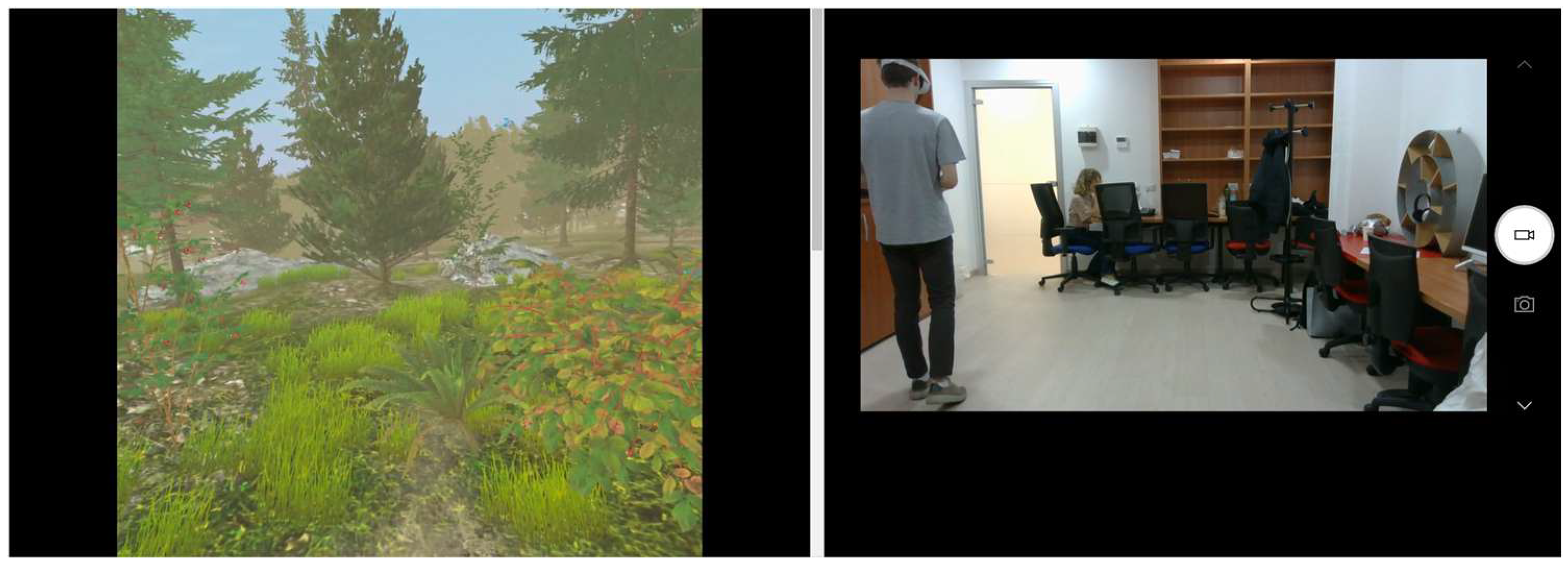
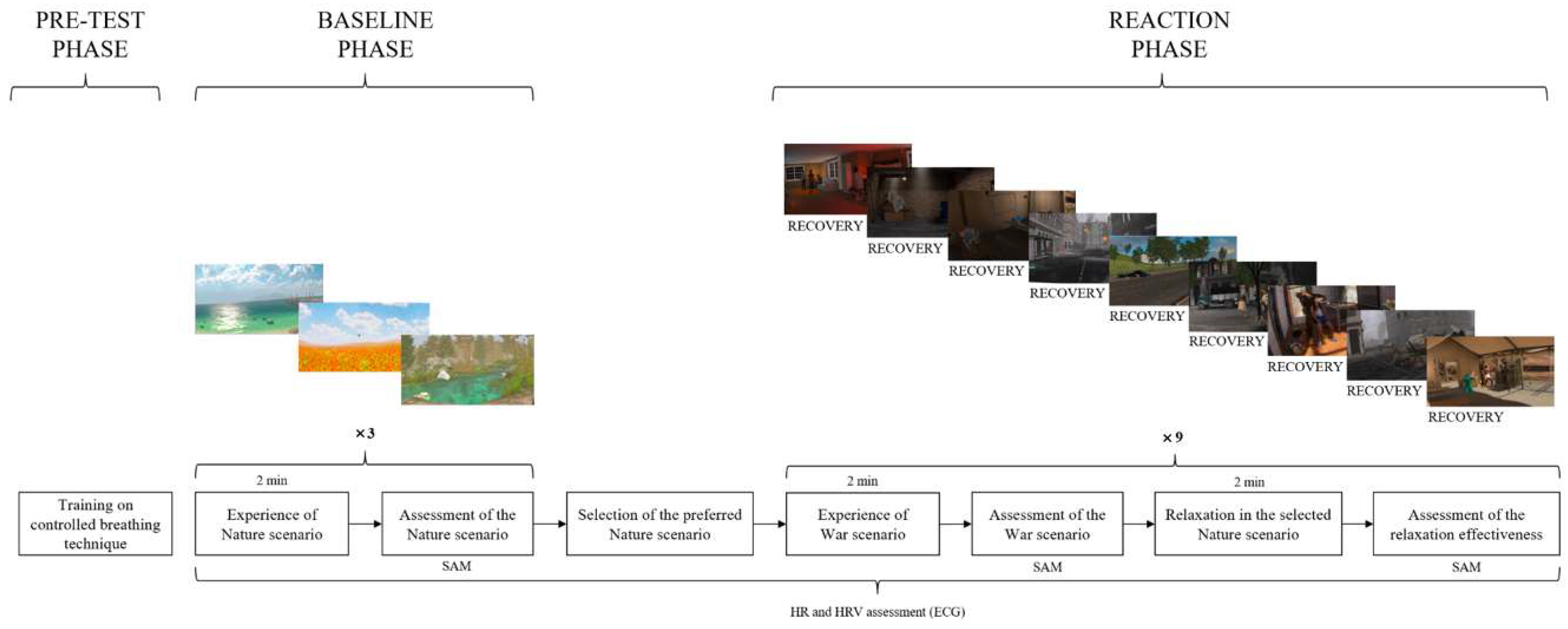

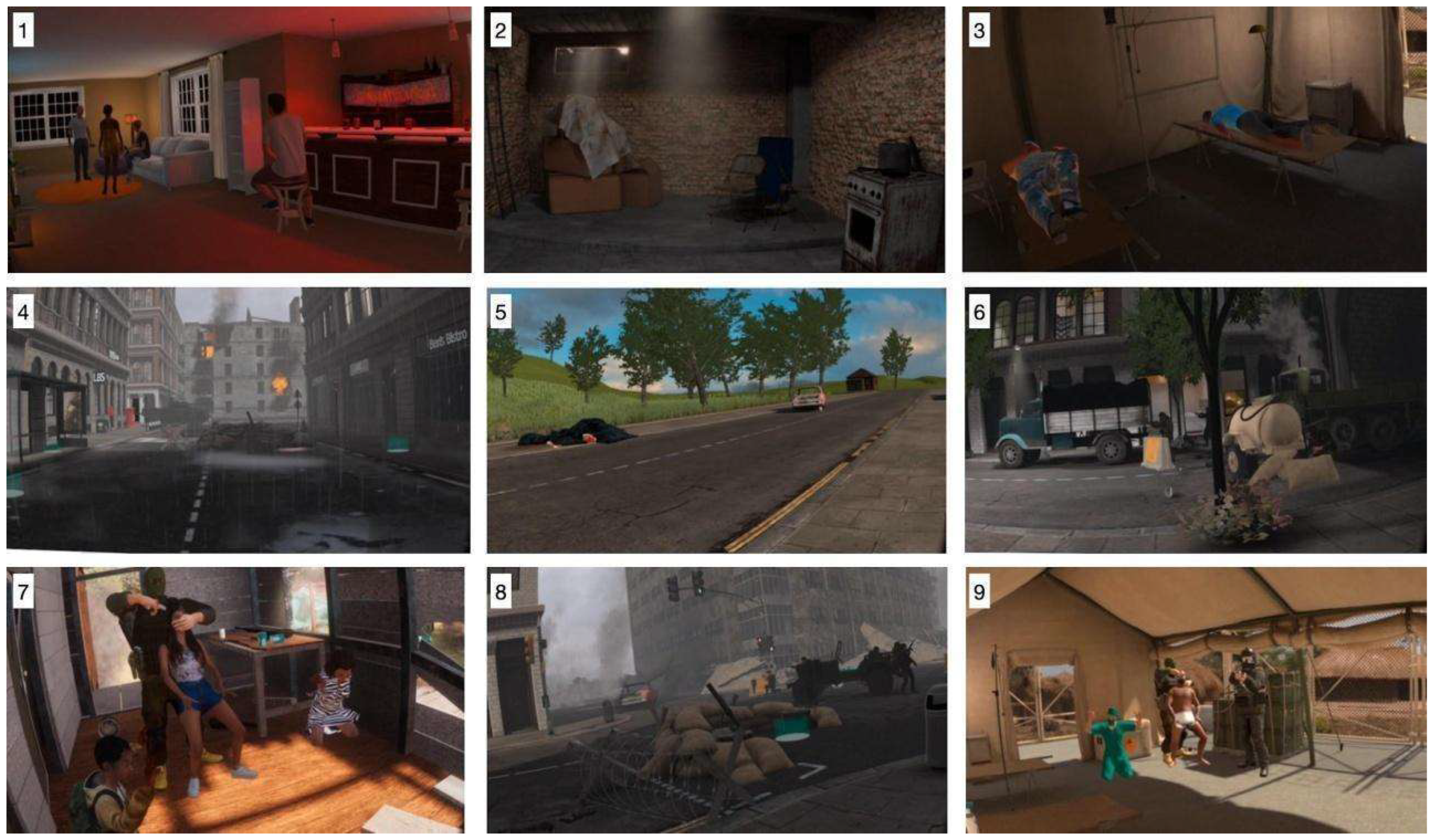
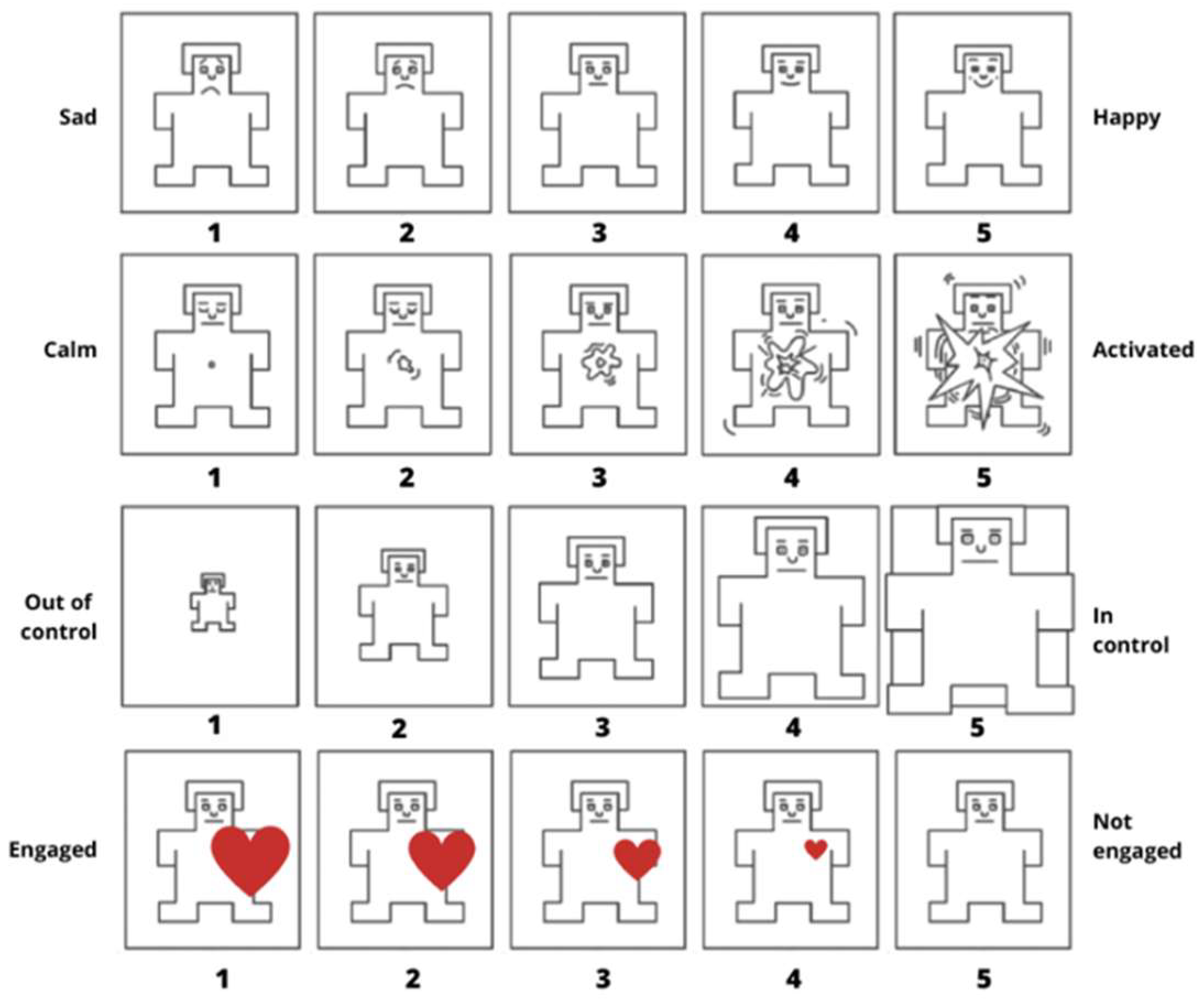
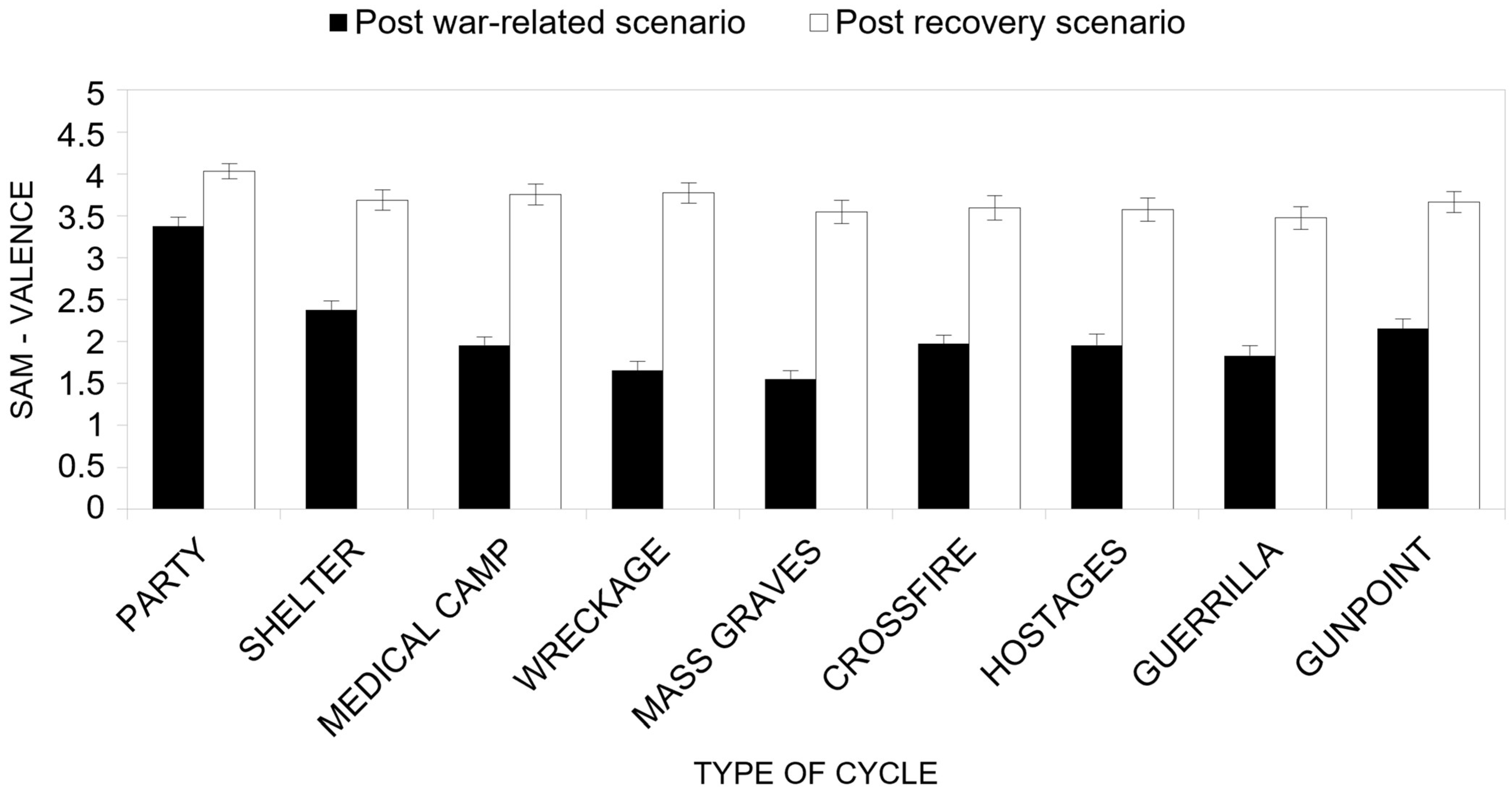
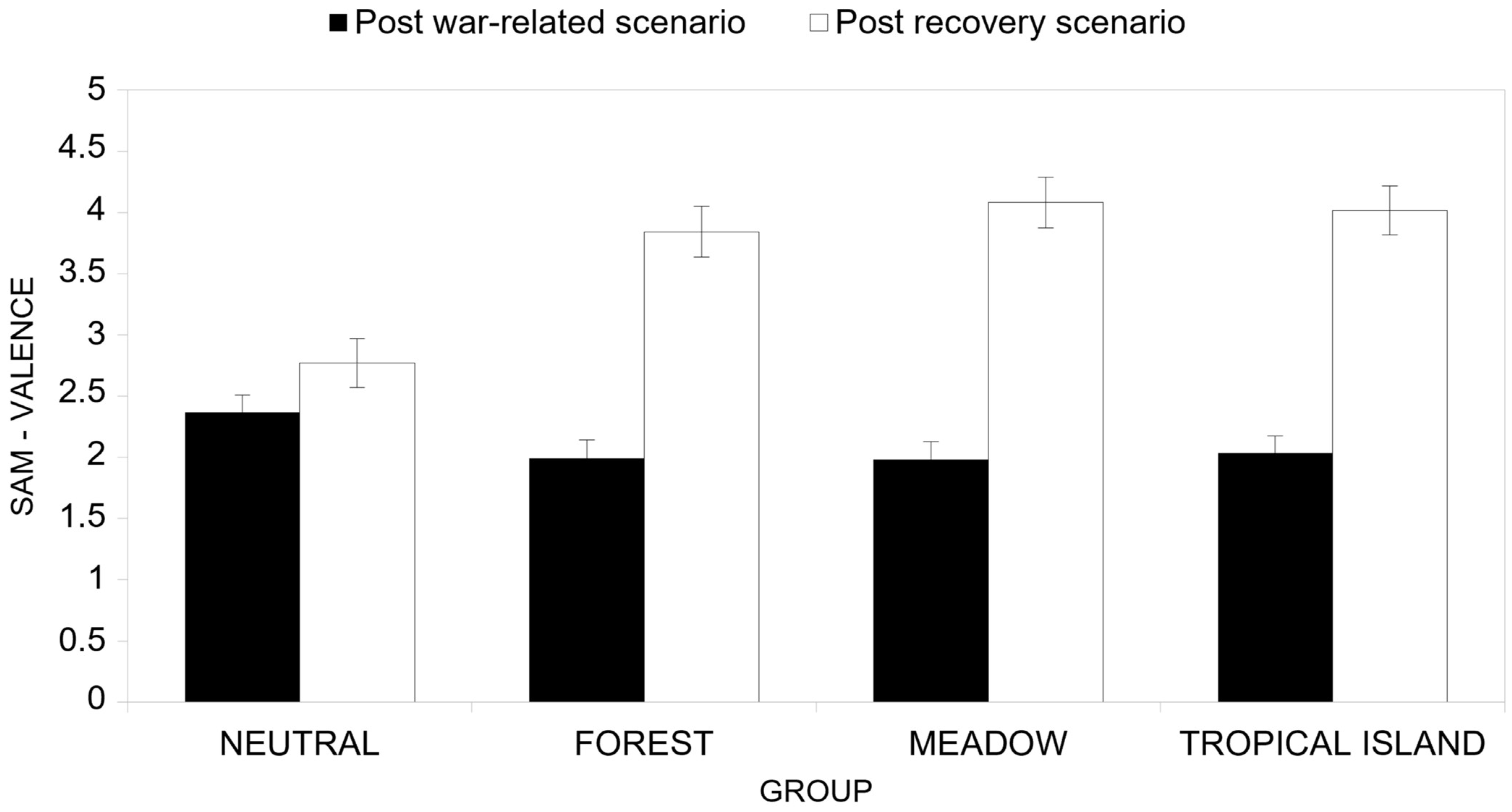
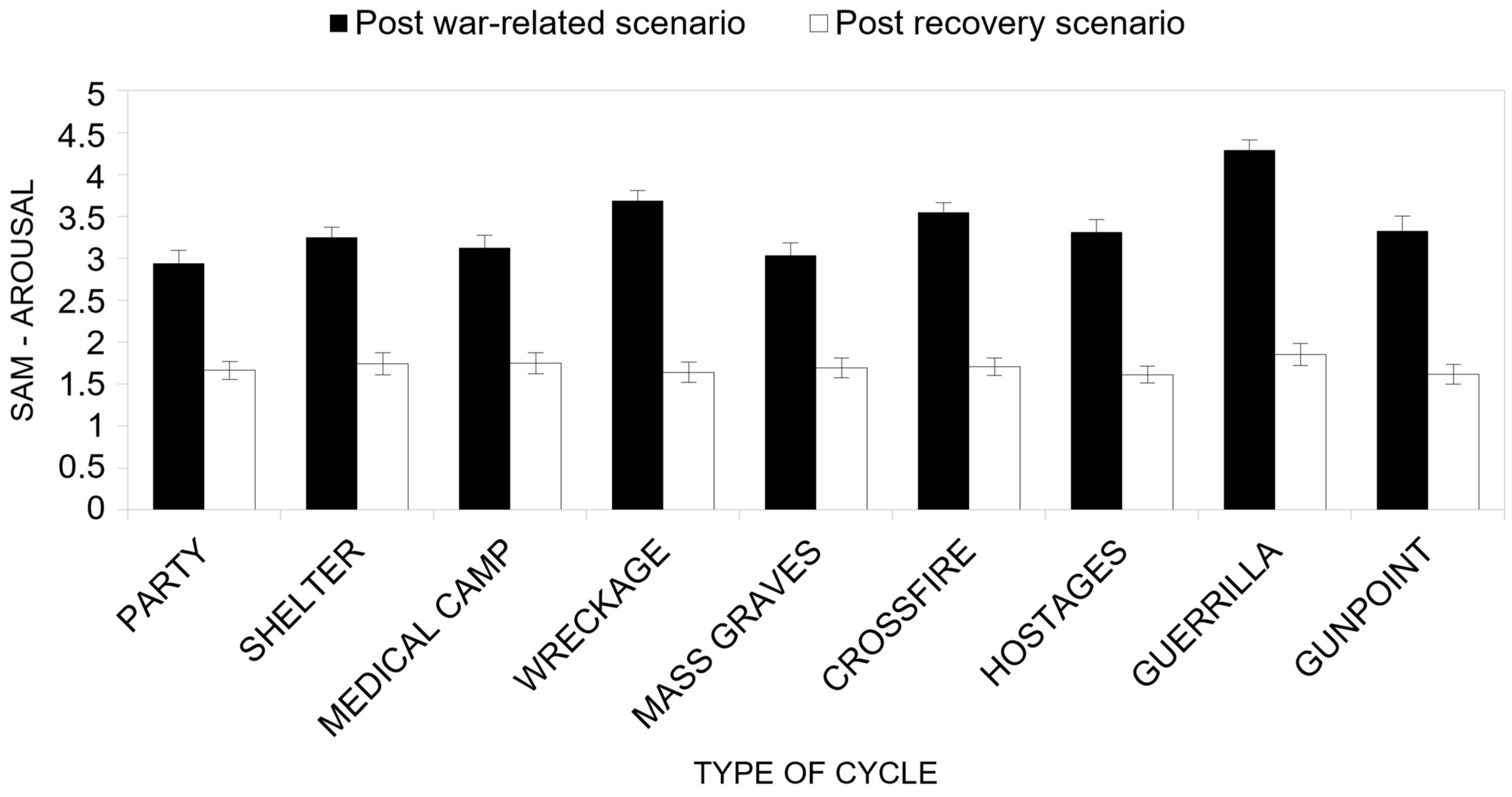
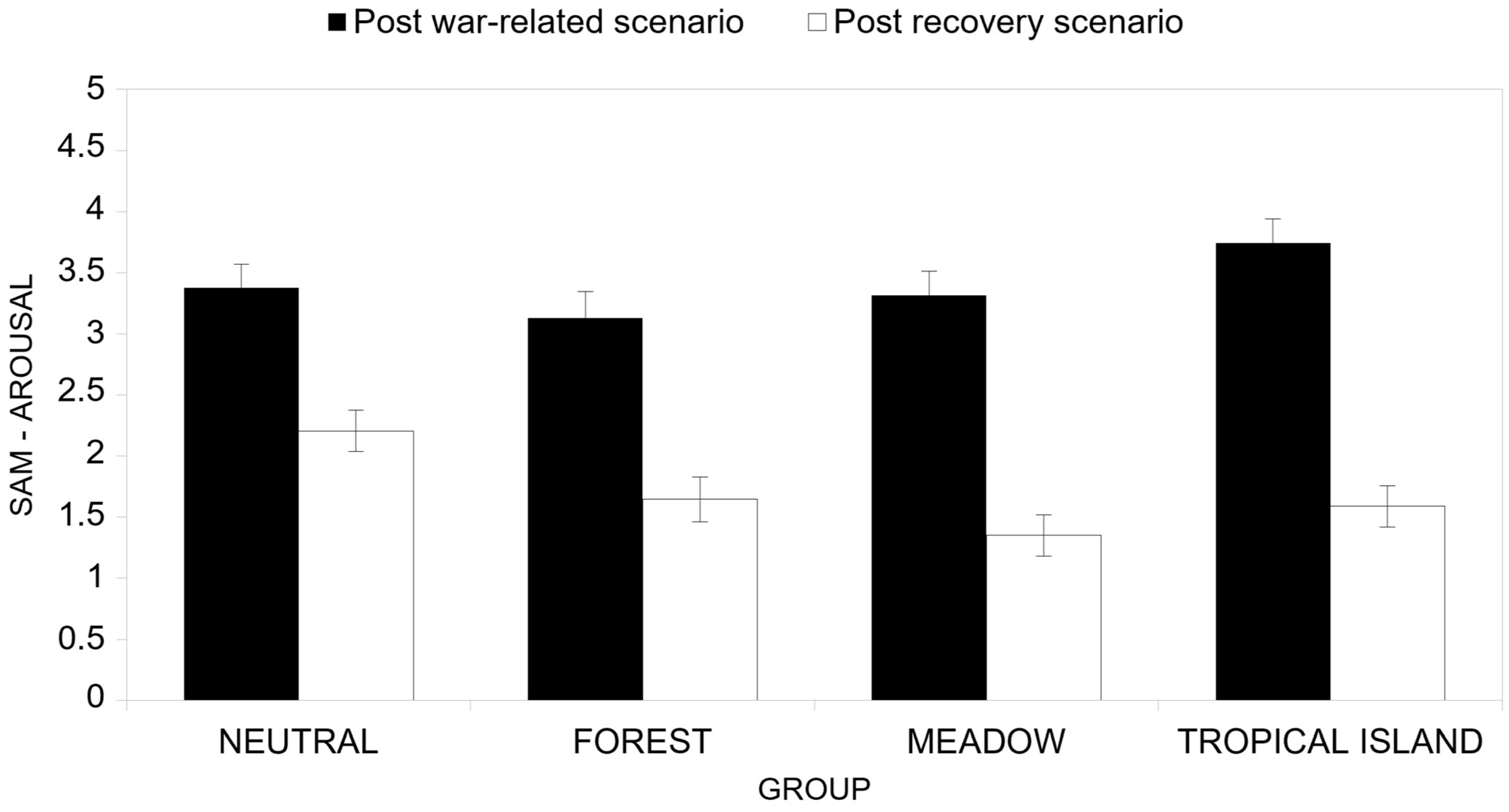
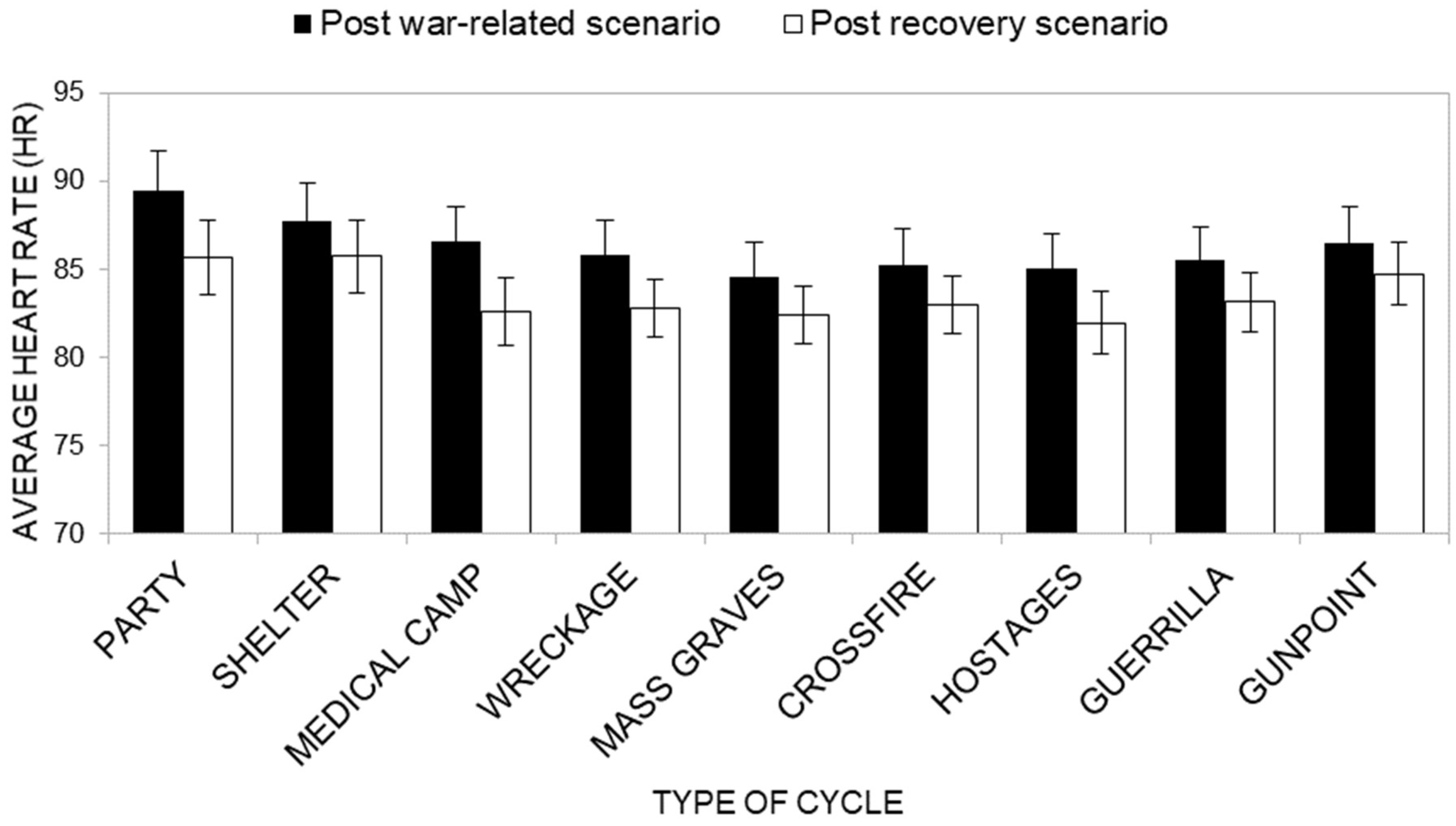
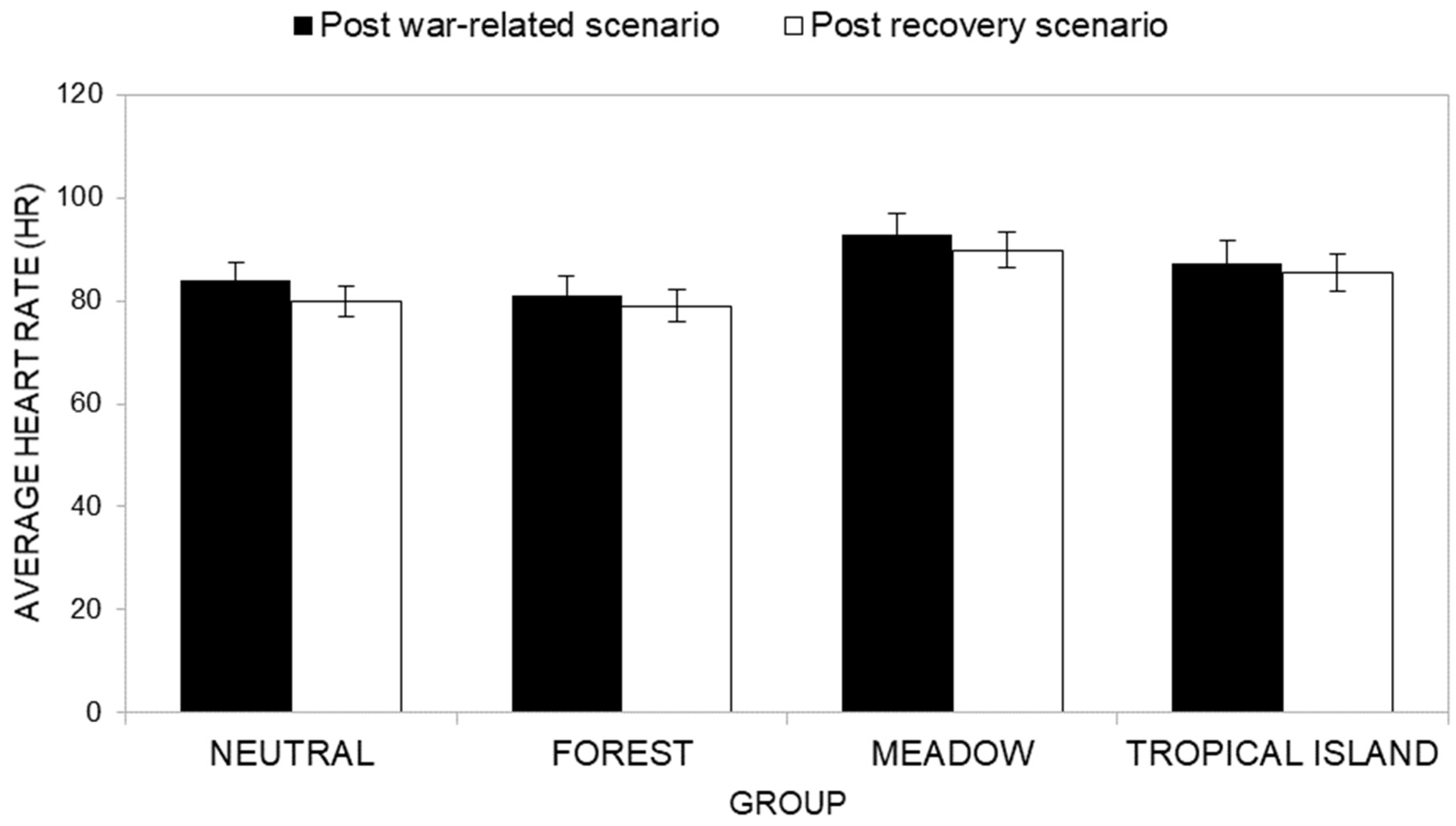
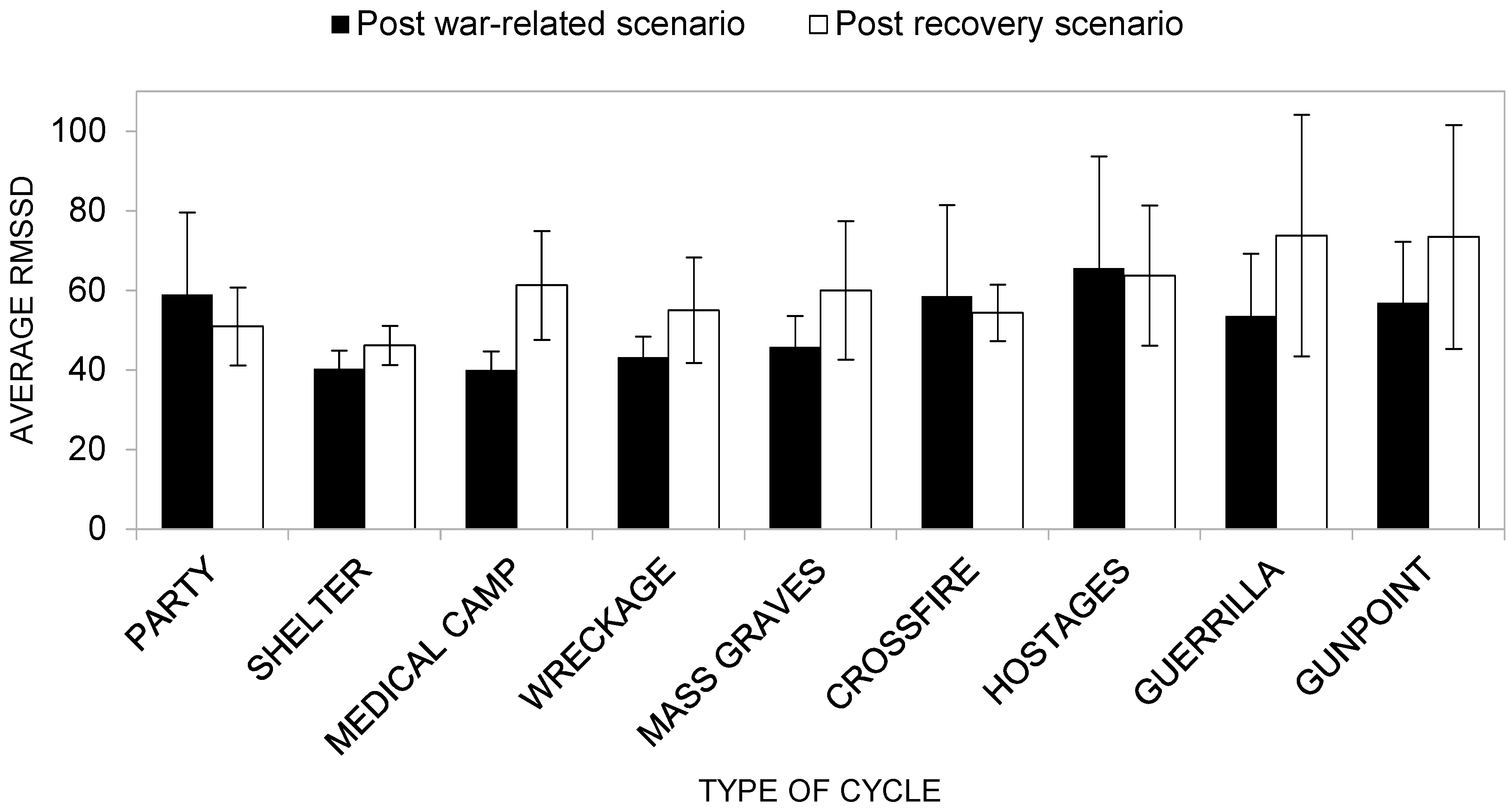
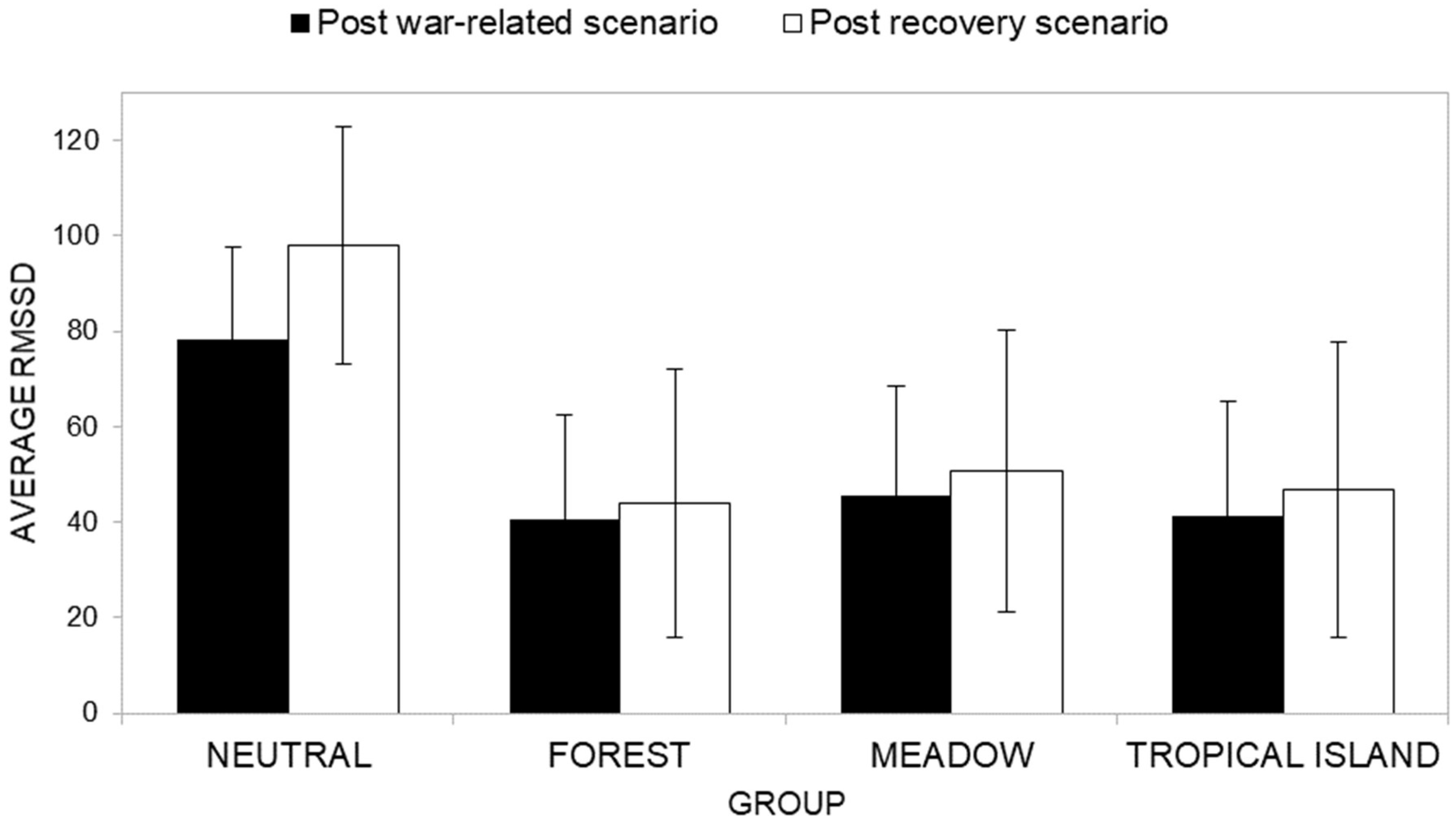
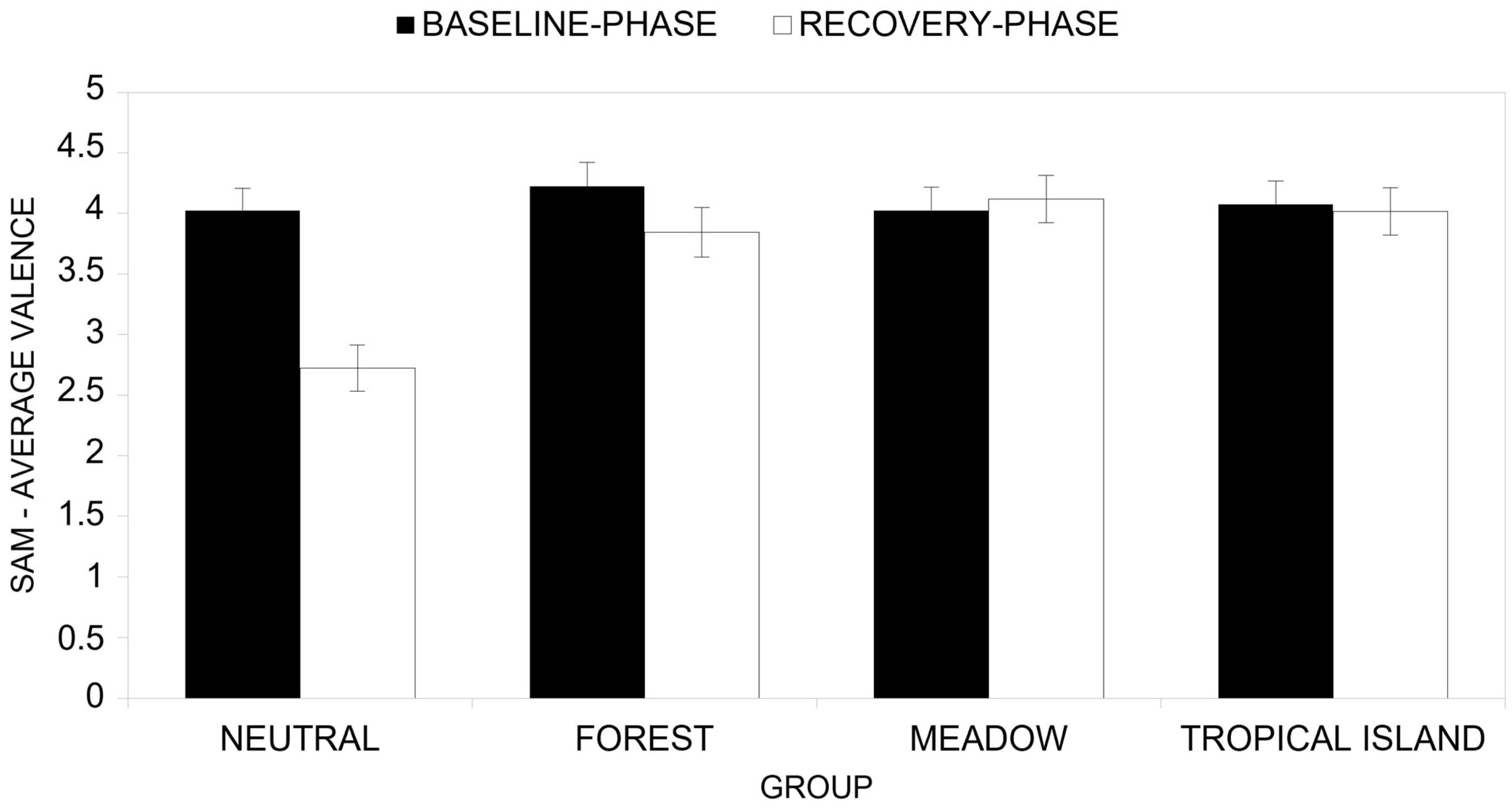

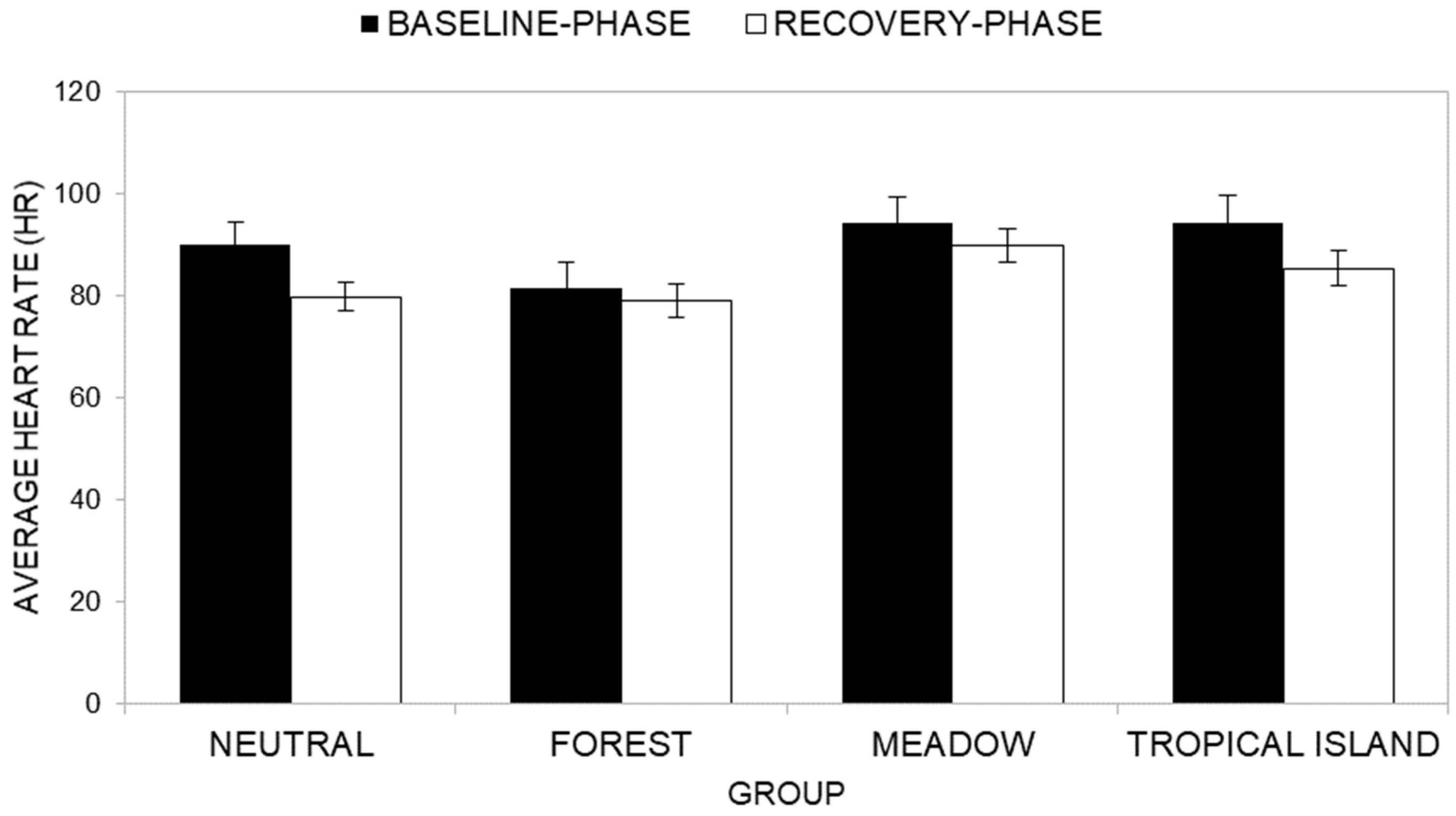
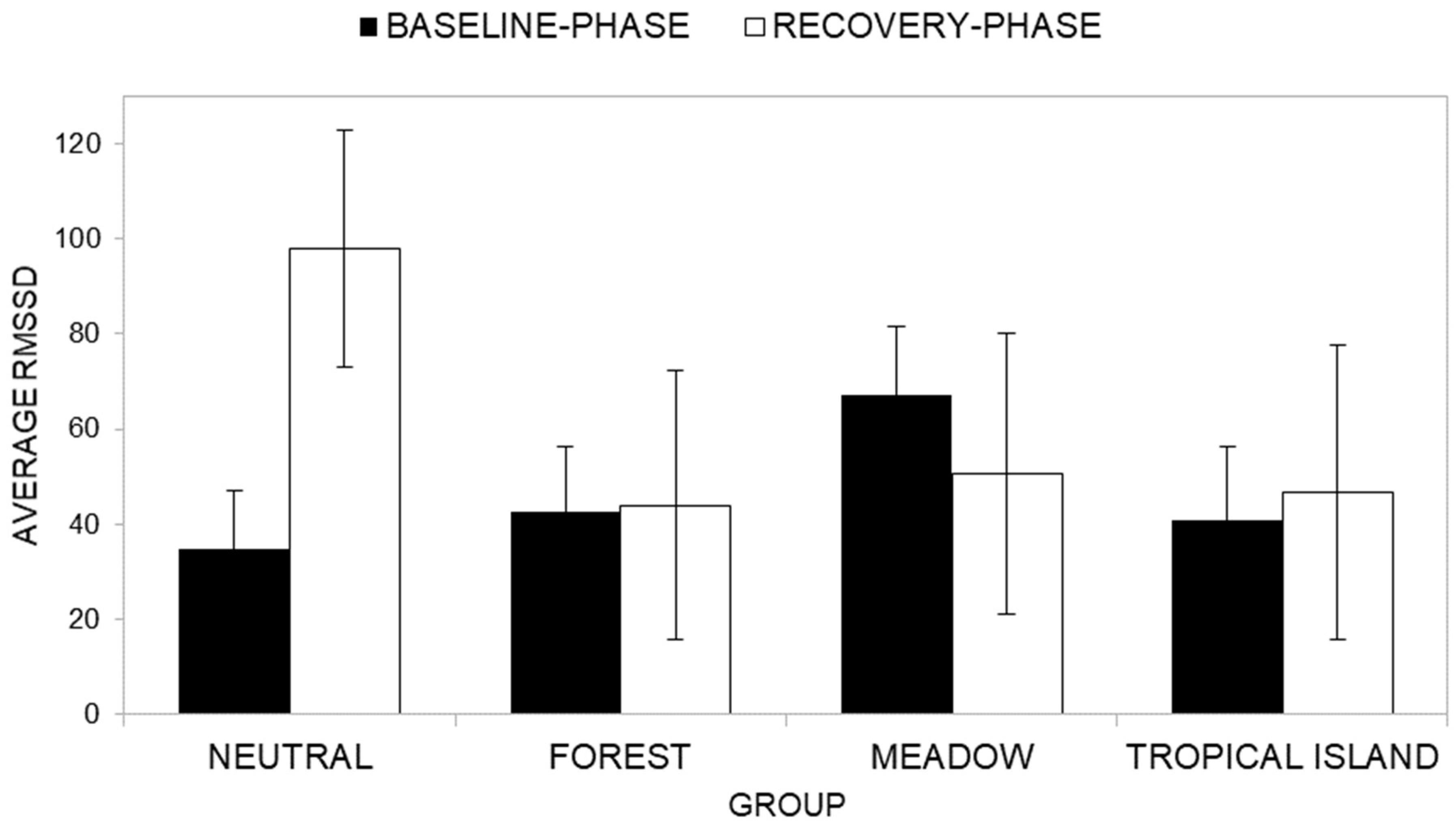
Disclaimer/Publisher’s Note: The statements, opinions and data contained in all publications are solely those of the individual author(s) and contributor(s) and not of MDPI and/or the editor(s). MDPI and/or the editor(s) disclaim responsibility for any injury to people or property resulting from any ideas, methods, instructions or products referred to in the content. |
© 2025 by the authors. Licensee MDPI, Basel, Switzerland. This article is an open access article distributed under the terms and conditions of the Creative Commons Attribution (CC BY) license (https://creativecommons.org/licenses/by/4.0/).
Share and Cite
Marocco, S.; Vitale, V.; Grossi, E.; Presaghi, F.; Bonaiuto, M.; Talamo, A. Exploring the Restorative Effects of Natural Environments in Virtual Reality. Int. J. Environ. Res. Public Health 2025, 22, 535. https://doi.org/10.3390/ijerph22040535
Marocco S, Vitale V, Grossi E, Presaghi F, Bonaiuto M, Talamo A. Exploring the Restorative Effects of Natural Environments in Virtual Reality. International Journal of Environmental Research and Public Health. 2025; 22(4):535. https://doi.org/10.3390/ijerph22040535
Chicago/Turabian StyleMarocco, Silvia, Valeria Vitale, Elena Grossi, Fabio Presaghi, Marino Bonaiuto, and Alessandra Talamo. 2025. "Exploring the Restorative Effects of Natural Environments in Virtual Reality" International Journal of Environmental Research and Public Health 22, no. 4: 535. https://doi.org/10.3390/ijerph22040535
APA StyleMarocco, S., Vitale, V., Grossi, E., Presaghi, F., Bonaiuto, M., & Talamo, A. (2025). Exploring the Restorative Effects of Natural Environments in Virtual Reality. International Journal of Environmental Research and Public Health, 22(4), 535. https://doi.org/10.3390/ijerph22040535






